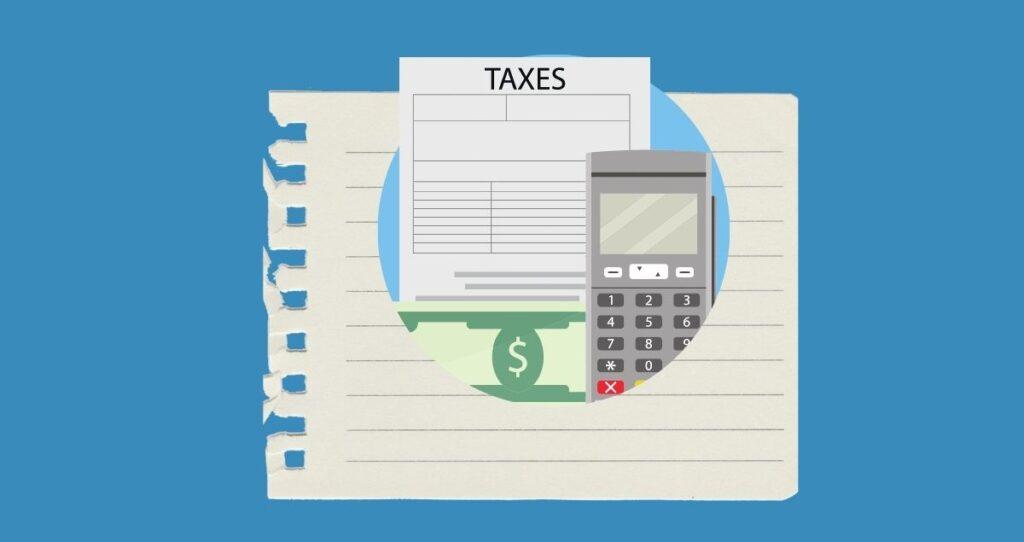Employee retention is becoming more difficult for many businesses due to conditions created by the coronavirus and the shift from office to remote work. Thousands of people are starting side hustles instead of focusing on their 9-5 jobs. According to SHRM.org, 4.5 million Americans quit their jobs in November 2021. The areas that were heavily affected include healthcare, the low-wage sectors, logistics, and hospitality. Unless you have strong employee retention strategies, your employees will soon quit if they have not started quitting yet.
There are many factors that are contributing to these mass resignations. According to a recent survey published in the Pew Research Center, employees who quit in 2021 had issues such as low pay(63%), lack of advancement opportunities(63%), being disrespected (57%), and 39% were working many hours, etc.
“People don’t want to work trend” among supervisors and managers
Managers and supervisors around the country are using the “people don’t want to work trend” as an excuse. Instead of figuring out what they are doing wrong and implementing employee retention strategies, they are blaming people who quit. The trend is: Oh, people don’t want to work, they are lazy, or they want to be paid without working, etc.
What about people who want to work and are still quitting? Everyone who is quitting is not a bad employee. Matter of fact, if 50% of employees who quit in your organization are bad, then you are to blame. It is not them, it is you. Why did you hire them if they were bad or lazy?
Truth: People want to work but not in your organization
People who are quitting are not just sitting at home. They are looking for other jobs that meet their best needs. Those who quit your company are now working somewhere else. The main reason they quit is that you could not provide what they wanted in order to stay. Maybe they were sitting in wrong jobs, you overloaded them, you treated them wrong, never gave them the opportunity to grow, etc.
Even if employees are quitting on a daily basis, there are employee retention strategies you can use to reduce your employee turnover ratio. Just because many businesses are losing their employees, it does not mean that yours should quit as well. But with remote work replacing traditional office-based work, it is now easy for employees to move freely from one company to another. They no longer feel stuck with one company. This is why you need to be creative to prevent your employees from quitting.
This article was written as a complete guide to help you retain employees with little to no effort.
The following are the best employee retention strategies you can start today.
1. Hire the right people

Before you worry about how to retain employees, you need to first hire the right employees. You can’t retain an employee who is sitting in the wrong position. When you hire the wrong people for the job, they start looking for other jobs the moment they start yours.
This makes it hard to retain those employees. Even if you have great programs and systems in place designed specifically to reduce employee turnover ratio; you cannot keep the wrong employees. They are not interested in what you are offering, and therefore, they are eager to find opportunities that fit them best. No matter how much you try, they will still leave.
For this reason, hiring the right people is the first step and one of the most important employee retention strategies.
How can you hire the right employees?
There are many strategies you can use to hire the right people. In summary, you need to make sure that the person you are hiring fits the job description and is eagerly willing to do it. This sounds simple but it can get complicated.
The following tips can help you hire the right employees.
- Your job descriptions should be specific and clarified
- The candidate must fully understand what you are asking them to do
- The right candidate should have an experience that meets the core job description
- An employee or candidate should have excitement to do the job
- The candidate should not be desperate (a desperate employee will walk to the moon just to get fired)
- Look at their past experiences but focus more on the future. It is not about how much they know, instead, it is about how much they are willing to learn.
- Don’t hire them just because you know them. Do not fall for these LinkedIn habits where people build relationships with hiring managers in an effort to increase the chances of getting the job in the future.
These tips and many more can help you hire the right employees for the job. Hiring the right people for the jobs at hand increases your chances of retaining them.
2. Have an onboarding process that is engaging and helpful
The onboarding process should not just be a time where you tell new employees who the founders are and that you build great products. Instead, it is a place where a person who never worked for your company or heard about it gets the following quality by the end of the process.
- Becomes knowledgeable
- Get excited
- Learn about what you do and how
- Builds trust in the company
- Get answers to where things are and how to get help
- Become committed to the company, etc.
This means that your onboarding process should focus more on giving new employees all resources they need to succeed.
One big mistake many companies make during the onboarding process is to focus on endless presentations that talk only about themselves and how they overcame challenges. You are not the only business running right now, and therefore, not the only one who overcame challenges.
New people need to know where the HR office is, how HR can help them solve their day to day problems, who their bosses are, what is expected from them, what benefits do you offer and how to signup, programs you have to help them succeed, and more importantly, what makes you stand out.
You can treat the onboarding process as a reversed interview. You are no longer interviewing new employees. Instead, you are in a position where you must convince new employees to stay. Just like they convinced you to hire them, it is your turn to convince them to stay. So, make the onboarding process helpful to your new employees.
Remember, they can still quit before they start the job. So, be there for them.
3. Have a competitive training program

Now that you have hired the right employees and welcomed them into the company; it is time do to the most important task of them all. Give them the right training for the job. Many companies struggle to retain employees, especially in the manufacturing sector due to the lack of the right training programs. They hire new employees and have them trained by someone who has been there for only two weeks.
An employee in training is training a new employee. Can you stop and think about that for a second?
What happens next is endless struggles, disaster, safety challenges, and quitting. Yes, how can you expect to retain employees if you are not giving them the right training?
There is a situation I myself witnessed where many employees were sent to work in other departments because there was none to train them for the job they were hired for. The problem was that they could not work in those departments they were sent in. Why? Because they were not hired for those jobs. More importantly, the department would be credited for using those extra employees. So, those employees spent almost a week sitting down in a department where they were not even supposed to be working.
One of the best employee retention strategies is to have the right training program and allow the learning curve for new employees.
In order to reduce your employee turnover ratio, you
need to have a strong training program. The people who train these employees must know the job and should be able to answer the questions and concerns of new employees.
In addition, make sure that each employee receives training for the specific job they were hired for. A big mistake many companies make is to create one training program that fits them all. It is like generic training. By the end of the training program, employees have no idea what it is they should be doing. In addition, they learn things from other departments that they will never need. You need to do better than this.
Let new employees go through the learning curve
The last point I want to mention here is the lack of a learning curve. It takes time for a new employee to go from knowing nothing about the job to being the master of the job. If supervisors are not allowing new employees to learn the job, then they are the problem. They hire new employees and then say, ” I need full production by the end of the day.”
The new person is not getting the right training they deserve on the job because those who are supposed to train them are busy trying to meet the numbers supervisor established. When new employees see the frustration on the work floor, they try to do their best hoping that they can make a difference. As a result, they end up doing the job the wrong way, getting hurt, and at the end of the day; everyone is frustrated.
If you want to retain your employees, start giving them the tools and resources they need to succeed. Do not worry about the number and output yet. These will come once your new employees are fully trained.
4. Do not be political when answering employees’ questions
When your employees ask you questions, it is an indication that they are interested in staying longer, making improvements, or simply trying to figure out ways to make their jobs easier and safer.
It is also possible that they are trying to protect their rights. So, make sure that you give them the answers they are looking for. A big mistake many managers and supervisors make is to treat their employees like they own them. So, they give them political answers like: “We will see” or “I will look into it”. Then, they never act on those promises.
The result from these communications becomes like giving your employees empty promises or like you don’t care. You can’t retain employees when they think that you do not care about them.
Another issue that is common among supervisors and managers is having a one-way communication system. An employee asks you a question but you never get back for an update. You don’t tell them what you found, what you think about their ideas, or simply if you can’t find answers. Honesty is very important in a workplace. You don’t necessarily need to have all the answers. You just need to keep them in the loop and updated. Never break their trust.
5. Employee retention strategies: Have an ideas box
Your employees will come if different shapes, sizes, talents, colors, habits, religions, etc. That is a good thing for businesses. This is called diversity.
Diversity is very important in a workplace. The problem with diversity is that it comes with its own challenges. Some people might not like the ways things are run, or simply the way they are being treated. Some people may raise their voice and tell you how they feel about things they want to be changed where they work.
Other employees, however, would rather quit instead of telling you how they feel. That is where the idea box comes in. Have this box accessible to all employees and encourage them to submit their thoughts and concerns if they cannot openly express them.
Then, review those thoughts and get back to them about the decision you have made or what the company thinks of them. This will be a great way to retain talented employees who want to remain anonymous but also be treated right.
6. Have a rewards program

Your employee’s performances will not be the same. Some of them will deliver more. Others will have mediocre performances. Your job is to treat employees based on their performance. If you have rules in place where employees in similar positions must be paid the same, have some kind of reward program. This program will be designed to recognize those who do their jobs and go beyond to keep your business running.
A mistake many businesses make is to have employees get paid the same but never recognize the ones they rely on to get the job done. People who are performing better than everyone else should be recognized and rewarded. Simple things such as a $100 gift card can make all the difference.
This shows that you are watching them and you appreciate the job they do. By appreciating their hard work, you give them a reason to keep doing what they do. If you keep asking them to do more or yell at the good ones for slowing down and never appreciate their hard work, they will leave your company. Remember, you are not the only company that can pay its employees.
7. Employee retention strategies: Respect your employees
One of the best employee retention strategies is to respect them. Not every employee in your organization is after the money. There are people who are there simply because they are respected and treated right.
Yes, they want money and you should pay them for the job they do. For some, money is not the biggest thing keeping them in your organization. Some people want to be respected and they are willing to do whatever it takes to get it.
If your company does not have policies in place to support respect among your employees, they will quit. Respect is not something they should beg you for, instead, it is something you should have in place before you even hire them. You need to respect your employees and have a culture that encourages and promotes respect among employees.
Managers and supervisors sometimes think that they are better than the people they are in charge of. As a result, they never take ideas from people on the floor or treat them right. The truth is that some of the people on the floor might be smarter than those in the office.
If someone is smarter than you, disrespecting them won’t change the situation. They will still be smarter than you whether you respect them or not. In response to your actions, they will take their big brains and talents somewhere they are appreciated and respected.
8. Focus on equality and diversity

Equality and diversity are some of the greatest causes of high employee turnover ratios for many businesses. Earlier I mentioned that diversity is very important in every organization. There are many people who stay in your business because they think their kind is welcomed, respected, and encouraged.
Diversity brings in talents of all kinds, and as a result, it helps you build competitive products and drive in more sales.
One big problem many businesses have is that they have diversity only on paper. They say they are diverse or encourage diversity whereas the number speaks the opposite. They hire one person from this tribe, race, religion, etc, and then say, “We are a diverse organization.” Then, they hire everyone else from only one race, culture, etc.
Having a company with such an image can deter many potential employees. You will have them in the door, but you will not keep them. They cannot stay if they are not included. You will not retain them after learning that you paint a different image of yourself.
Another mistake many businesses make is to treat employees wrong simply because they are from a different religion, race, gender, culture, etc. They put in place hidden policies that penalize a particular group of people and policies that favors another group. That is why if you observe carefully, you will see that people who get promoted to higher positions are from a particular group.
Cultures like these compromise the very basic principles of diversity. You don’t have to hire people so that you will look diverse. You hire them for their talents. At the same time, equal treatment and respect should be a guarantee for every employee who comes to your doors.
9. Use the revenue-sharing technique
A great technique you can use to lower your employee turnover ratio is to use the revenue-sharing method. Revenue-sharing is a process where a company distributes profits to its employees, shareholders, and other contributors. This trick makes it easy to keep good and talented employees.
When you share your profits with your employees, it makes them feel like they are part of the company. The company becomes like a family to them which makes them want to stay longer. For this reason, profit-sharing is one of the best employee retention strategies you can apply in your organization.
10. Give them a sense of responsibilities
Some employees like to feel like they are responsible or in charge of something great. Knowing that they have done something good that is going to change the lives of many people is a big motivation for some employees.
That is why you should always let your employees be in charge of what they do. As long as your employees have all the resources they need, you should leave them alone. This gives them a sense of responsibility and makes them feel like they are a part of a big mission.
So, if you want to increase your employee retention, stop micromanaging your employees. Do not ask them what they are doing every second. Leave them alone and step in only when you have to.
11. Give them growth Opportunities

A company with no growth opportunities for its employees should not claim a seat on a big round table. Being in a very competitive market like this means that employees can move freely and work for whoever they want. You are competing with other companies, and if you are not careful, other companies will steal your employees.
So, if you are looking for employee retention strategies, start creating growth opportunities for your employees. Your employees need something to look up to. They need something they can accomplish in your organization that is bigger than themselves. If you don’t have that, you are not qualified to have them in the first place.
Without growth opportunities, employees feel like they are stuck. It is like no matter what they do, they will never make more than they are making right now. More importantly, they will never move up or hold a different position than they have right now. And if they do, their salary will never go higher. That is their fates are sealed.
How many people do you think will want to be in this position for the rest of their lives?
I will let you answer that question. The point I am trying to make here is that nobody in the world wants to be stuck where they work. If you cannot provide opportunities for your employees, they will go somewhere where they can be recognized and appreciated.
Start creating meaningful opportunities for your employees if you want to keep them longer.
12. Employee retention strategies: Pay them right
In your organization, you will have a lot of talented employees with different experiences, backgrounds, and dreams. Unless you have a pay scale that each person falls into, you must pay your employees on the basis of negotiation.
Although this sounds simple, it gets complicated during implementation and sometimes causes conflicts. One mistake many companies make when negotiating salaries is to offer different salaries to the same people who do the same job without a significant difference in their levels of experience or contribution.
If I have been doing a job for like 5 years and get paid $x amount and you hire another person to work with me doing the same thing and you pay them two times my salary; what makes you feel like I will stay?
Matter of fact, I probably have more experience doing that same job than the new person you just hired. On top of that, you asked me to train them.
Let’s evaluate what just happened.
- You hired a person to work with me
- I have been doing the same job for 5 years and I am a top performer,
- You asked me to train that new person
- Then, you pay that person twice my salary.
What is most likely going to happen?
If you thought that I will quit, you are right. You cannot retain employees if you are not paying them appropriately. Even if the new person has some other experiences, as long as we are doing the same thing our salaries should be the same or close. Of course, this can vary from one industry to another.
Another mistake many companies make is to have pay scales each employee falls into and never compensate those who know more. If I know 20% of the entire task and get paid the same as a person who knows 100%, why would I spend my energy and resources learning more?
At the same time, If a person knows 100% of the entire process and gets paid the same as a person who only knows 30%; what makes you feel like they will stay? The person who knows 100% of the process is being underpaid.
If knowing more does not contribute to more pay, employees will not be motivated to learn more. At the same time, you will depend on those who know more to get the job done. This will put more stress on those who know a lot. As a result, they will want to leave. Why would they do more if they are not being compensated for it?
All these differences cause employers to lose employees. Paying your employees right increases your chances of keeping them longer. If your employee has been working there longer and you depend on them to get the job done, you should give them a raise when they ask for it. They worked hard for it. Otherwise, they will go somewhere they work less and get paid the same.
13. Make it easy for your employees to do their jobs

Another reason many companies find it difficult to retain top talents is that the processes and workflow do not help them succeed. Instead of contributing, employees spend a lot of time navigating through useless steps that only bring them stress.
One of your job as an employer is to create processes that are easy to understand and follow. This way, your employees focus more time on doing their jobs than trying to figure out how to do them. Make it easy for your employees to do their job. Without stress, your employees will not think twice to work the next day.
But if your work environment is complex for no reason, your employees will start looking elsewhere. Remember, you are not the only company that can pay its employees. Many companies are hiring.
14. Employee retention strategies: Give them reviews
Employee reviews should be something each employer incorporates into their practices. Your employees are working but at some level, they will need to know how they are doing.
You need to give them feedback on what they do and how they perform in a team. During the reviews, you should also let them know about opportunities they can tap into to achieve more growth potential. Each step they will need to take should be clear and understandable. In addition, you should be able to give them the most relevant answers to their questions. That is how you will be able to retain talented employees.
15. Do not give them tasks that are beyond their capacities

One of the best employee retention strategies is to know the balance between your employees and what you ask them to do. Employees come and go. However, there are times when too many employees leave due to conditions like covid or simply economic conditions. Events like these are unpredictable and you cannot prevent them from happening.
Losing employees, however, does not mean that your customers are gone and orders have been canceled.
Your orders will still be there even if you don’t have enough people to make products.
A big mistake many companies make is delaying the hiring processes for replacements. They think that things will turn out ok. Instead of hiring new employees, they put all the workload on a few remaining employees.
For example, some companies produce like 50 units of goods in 8 hours with 20 employees. After losing like 10 employees, they still force the remaining 10 people to do 50 units in the same time frame but never pay them more. You have lost 50% of the workforce and still, you are requiring the same production. In other words, you are asking each remaining employee to work double for the same pay.
Your employees are there to work and get paid. However, they are not there to be used. So, in order to retain employees, you need to give them tasks that are proportional to their capacities. You can ask them to do a little more due to different circumstances. However, you cannot treat them wrong knowingly and expect to get away with it.
16. Increase their safety
Safety is a major concern for many businesses. Without safety protocols in place, your business will never retain employees. This is the basic rule of any work environment and it is one of the best employee retention strategies.
Your employees come to work every day to make money. However, they cannot afford to exchange their legs, arms, eyes, etc., for a paycheck.
That is why businesses with low safety protocols tend to have the lowest retention rates. One employee goes there, loses a leg, and everyone else starts looking for a different job.
Focus on the safety of your employees if you want to keep them. Come up with systems that make it easy to work and stay safe at the same time. Once this box is checked, you will see a big change in your employee turnover ratio.








